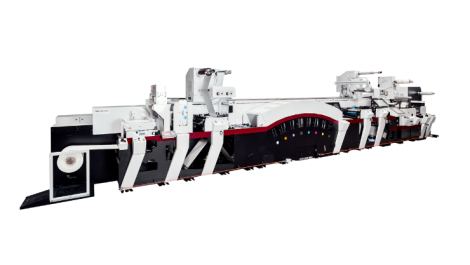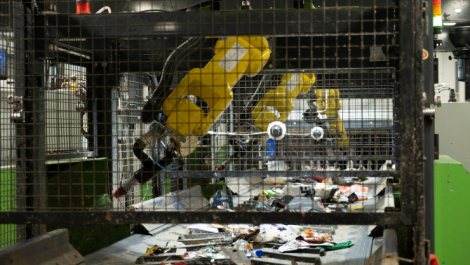There are many critical financial and technological considerations printers must consider when investing in a digital labels or packaging press, simultaneously balancing innovation, operational needs, and long-term strategic growth. By Michal Lodej.
In the rapidly evolving world of commercial printing, investing in a digital press represents a critical strategic decision that demands careful financial and technological planning. Printing businesses must approach this investment with a comprehensive understanding of both immediate operational needs and long-term business objectives.
Financial considerations form the cornerstone of this decision-making process. Printers must conduct a rigorous assessment of return on investment, ensuring the digital press will generate sufficient additional revenue to justify its substantial cost. This involves more than simple calculations; it requires a nuanced understanding of how the new technology can unlock new market opportunities and enhance operational efficiency.
Printers have been in and out of survival mode for a prolonged period, and for some navigating these challenges has brought tremendous pressure. Whilst insolvencies continued to rise in 2024, overall business confidence is increasing.
The Autumn Budget brought mixed reactions. While there are positives like extensions to the Green First Year Allowances, Full Expensing, and the continued £1 million Annual Investment Allowance, printers will be significantly impacted by the increase in employer National Insurance Contributions and the Minimum Wage.
Jamie Nelson, director, Compass Finance, said, ‘For printers planning significant investments this year, securing finance hinges on a strong business proposition and the right funding partner. It’s crucial to find a lender who understands the printing sector, SME lifecycles, and can support the business both at inception and throughout its growth. Good providers live off their reputation and referrals in the market. The goal for most printers, is growth, and your finance provider should be a partner in this journey, understanding the value of your customers and the nuances of your business, especially when you’re taking on larger projects or commitments.
‘Investing in new technology is crucial for printers looking to stay competitive and drive growth, particularly when products and technologies are evolving so quickly. There are some fantastic events on the horizon this year to showcase the most recent developments, such as the Hunkeler Innovationdays and the Fespa Global Print Expo, which we’re really looking forward to attending with our customers.’
High Street Banks vs Independent Lenders
High street banks often set a high bar for funding access, requiring businesses to bank with them and meet stringent criteria like solid credit ratings, deposits, and personal guarantees.
Fortunately, independent lenders and challenger banks are stepping in to help businesses invest. They take the time to understand individual business needs and focus on how investments and future plans can strengthen and grow the business.
Lenders accredited by the British Business Bank to provide funding supported by the Growth Guarantee Scheme (GGS), such as Compass, are in place to support lending to UK SMEs in scenarios where additional support is required to get an investment off the ground. GGS can also enable lenders to provide lower interest rates than they otherwise would have done in higher risk scenarios.
Asset-Based Lending (ABL) is gaining popularity as a key approach for businesses seeking to unlock much-needed capital and/or improve existing facility terms. ABL typically offers higher levels of working capital than conventional funding methods and is particularly useful in event-driven scenarios like raising working capital, restructuring, acquisitions, management buyouts (MBOs), and management buy-ins (MBIs). These scenarios often require increased headroom to support purchase considerations and future growth.
ABL packages provide a robust alternative, often underpinned by invoice finance facilities and term loans. They can also include vehicles, plant, machinery, property finance, and sometimes inventory. Transactions typically either replace existing finance providers or use unencumbered assets to achieve better outcomes.
The different financing structures available offer additional complexity. Flexible payment options that align with the business’s cash flow can mitigate financial strain. Some businesses might leverage existing equipment to raise deposits or explore hire purchase and leasing options that optimise tax implications.
Beyond the loan
Technology compatibility presents a critical evaluation point. Printers must look beyond the immediate specifications of a digital press and develop a clear vision for future technological upgrades. The goal is to invest in a solution that remains current and competitive throughout its operational lifecycle, rather than becoming obsolete shortly after installation.
Adam Baldwin, area sales manager at Close Brothers Asset Finance, ‘Said a key element to consider is depreciation; will the machine drop in value quicker than you can repay the capital debt, leaving you in negative equity when you want to upgrade to newer technology.’
Operational costs extend far beyond the initial purchase price. Click charges, service contracts, ink or toner expenses, and maintenance requirements all contribute to the total cost of ownership. Sophisticated buyers will model these ongoing expenses meticulously, ensuring the investment remains financially sustainable throughout the asset’s useful life.
Finishing capabilities represent another vital consideration. The digital press must integrate seamlessly with existing or planned finishing equipment, eliminating potential workflow bottlenecks that could negate productivity gains. This requires a holistic view of the entire printing process, from initial print to final product delivery.
Depreciation emerges as a crucial factor that can significantly impact the financial viability of the investment. Savvy business owners must carefully analyse the machine’s potential value trajectory, avoiding scenarios where the asset depreciates more rapidly than the outstanding capital debt. This requires a forward-looking approach that considers not just current market conditions, but anticipated technological developments in digital printing.
Support and maintenance cannot be afterthoughts. Printers must thoroughly investigate the supplier’s track record, understanding the level of technical support available as the machine ages. This includes evaluating service contract terms, response times, and the availability of replacement parts.
Strategic alignment remains paramount. The decision to invest in a digital press should stem from a clear understanding of the business’s long-term goals. This means conducting comprehensive market research, analysing client needs, and positioning the new technology as a strategic asset rather than merely a capital expense.
While the printing industry faces significant financial challenges, there are opportunities for growth and investment with the right financial strategies and partners. By understanding the current financial landscape and leveraging products such as, asset-based lending, printers can navigate these challenges and continue to position themselves for ongoing growth and success.
Jonathan Bennett, commercial director at Close Brothers Asset Finance, said, ‘There are four questions it’s important for Printers to answer; Is the finance term in line with the life cycle of the asset? Are there other click & service charges that need to be considered on top of the finance payments? Will the chosen asset be a current model for the life of the finance agreement? Will reduced click charges on a new machine replacing old mitigate the finance repayments?
Ultimately, the decision to invest in a digital press transcends technical specifications and financial calculations. It requires a holistic approach that balances technological innovation, financial prudence, and strategic vision. Successful printers will view this investment not as a mere equipment purchase, but as a transformative opportunity to enhance their competitive positioning in an increasingly dynamic marketplace.






